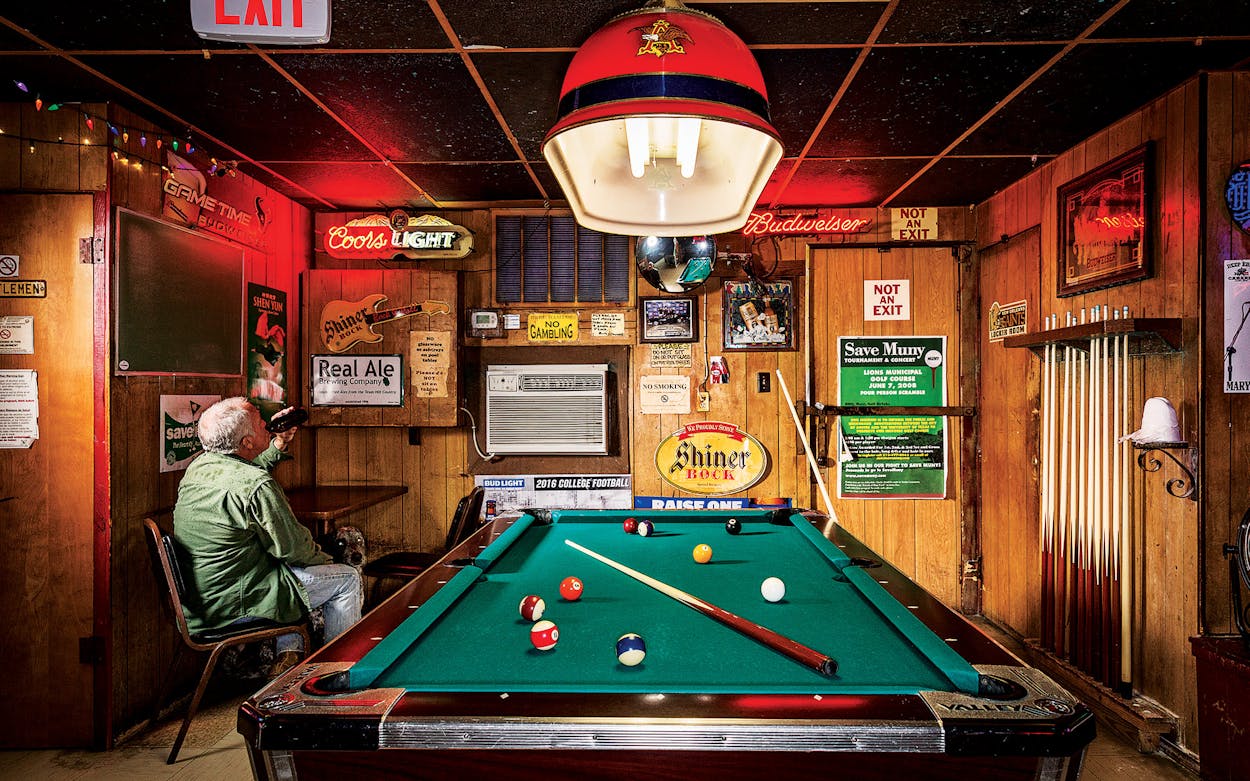There’s nothing quite like drinking in a real dive bar. These treasured spots lack many of the modern amenities we’ve come to expect from newer, trendier places, and I’ll get to that in a minute. But dive bars do offer a unique experience. For one, they have character, not just kitschy wall art that’s part of some branding effort, but authentic character, earned over decades. And they provide a connection to a simpler past, before everything and everyone promoted themselves on Facebook. Many dive bars don’t even have websites. They’re relics from a time when our interactions were in person rather than digital.
It goes far beyond that, though. I’ve been to hundreds of dive bars over the years, in cities and rural areas, in strip malls and neighborhoods, and they all have one thing in common: a sense of community. It’s something like church or family, or like the corner pubs and bistros of old Europe. Dive bars that have survived for decades do so because they are something more than mere purveyors of alcohol. They thrive because of their owners—people who treat these places and their regulars more like beloved family members than mere financial assets—and that affection is reciprocated by the customers. Most regulars of Lalo’s Sportsman Club, in Laredo, just call it El Pozo, “the Well.” It’s a well in the literal sense—liquid refreshment—and the figurative, a place to share and dispense wisdom (on occasion) and rave and rant, roar and laugh, meditate and cogitate.
But that experience is becoming harder to find. In the older and often hipper sections of most Texas cities, the true dive bar has become an ever-more-endangered species, and one often misidentified at that. Enter “dive bars” into Yelp’s search engine, or find some list put together by a website or the local paper, and chances are that most of the establishments are not true dive bars. The honored word “dive” is now tossed around willy-nilly, used to describe pretty much any place that does not blast oonch-oonch club music, charge a cover, enforce valet parking, or offer bottle service.
A mere lack of pretension does not a true dive bar make. With certain rare exceptions—like Lola’s, in Houston—grungy, hipster hangouts are not true dive bars. These places serve fancier beer than you would find at a dive and much tastier food. (If a chef other than Boyardee has his or her name attached to the menu, you are not in a true dive.) You will also find some level of irony, some nod to the fact that the patrons are slumming it. Real dive bars aren’t ironic.
In Dallas, dives have become intensively fetishized, notably at places like Lee Harvey’s—no true dive would name itself after a presidential assassin—and most obnoxiously at the sister joints Double Wide and Single Wide, each one a caricature of a mythical East Texas trailer park tavern. The latter two offer signature cocktails that “hit harder than yer dad!” with ingredients like Tang, Pixy Stix, and Boone’s Farm wine, and names like the Yoohoo Yeehaw (“White Russian meets white trash,” according to the bar menu) and the Hurritang, after a few of which, again per the menu, “even FEMA can’t help you.” There’s a nod toward another kind of natural disaster that often devastates the lives of poor people in the form of a sculpture of a silver tornado perched atop the Double Wide’s trailerlike structure. The Single Wide’s slogan is “Half the trailer, all the trash.” All of which just goes to show how cruelly and openly urban hipsters feel they can mock rural poor Anglos. These spots are nothing more than overpriced dive-bar amusement parks, stylized beyond recognition of the places they attempt to imitate and offering patrons the chance to revel in “authentic” ambience without encountering anything or anyone authentic.
But we are concerning ourselves here with the dive bar in its truest form, the Platonic ideal of the dive, one we seem to be losing sight of even as fast as the establishments (along with their owners and regulars) themselves disappear. So how can you identify a real-deal dive bar? Let’s start with the name. Any bar that bills itself as a dive is almost certainly not one. On the flip side, if the nicotine-rasped, bouffant-wearing owner hates it when you call her establishment a dive—“This ain’t no dive, this is a neighborhood bar, shug,” she will tell you, and she will mean it—you are definitely in a dive.
It also needs to have been around awhile. You can’t just open a dive bar. Forming the sturdy bulwark of regulars takes years. Generally speaking, only a bar that is itself of legal drinking age can be grizzled enough to be a true dive. The carpets and surfaces need time to marinate, and as in a cave, its walls must accrete decor over many, many years, like the slow growth of stalagmites and stalactites.
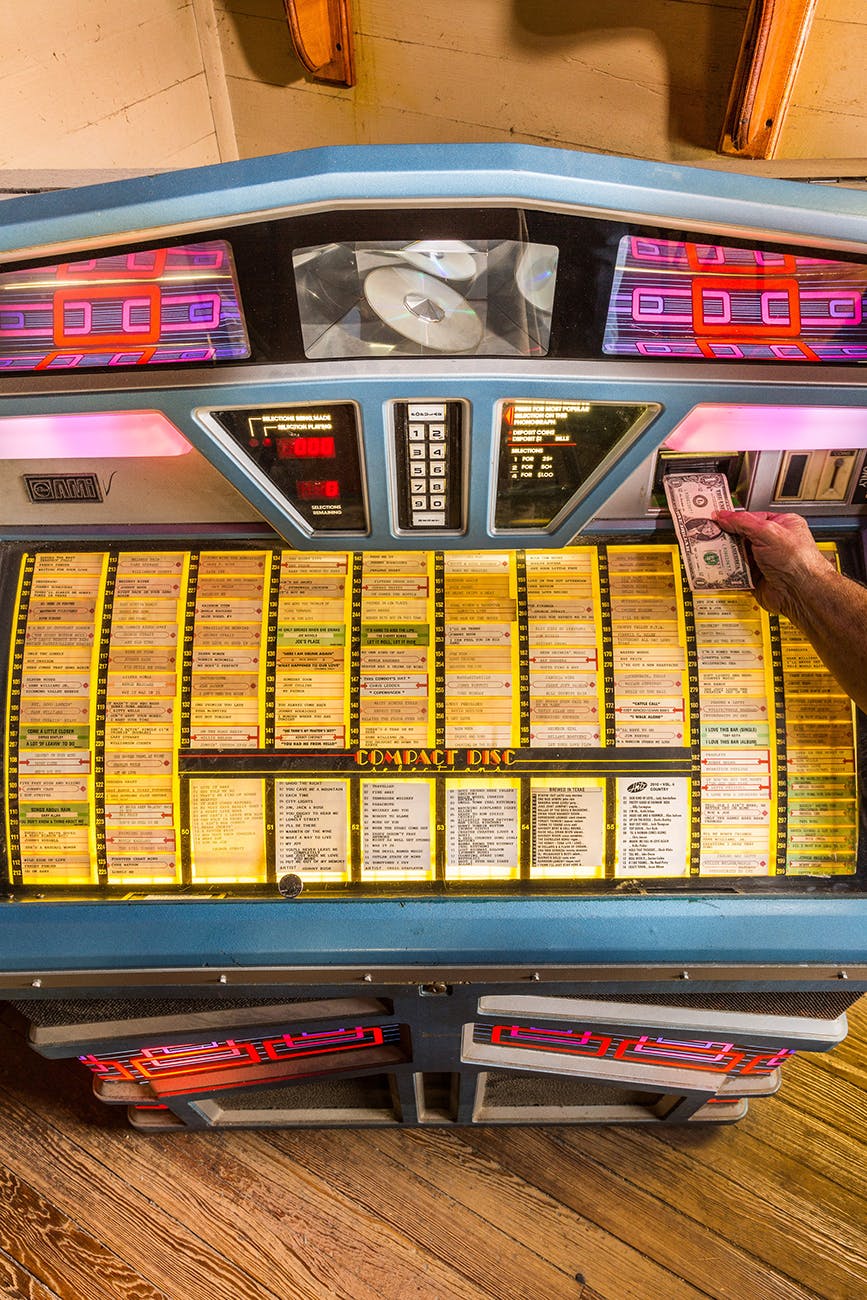
And the customers should have been around awhile too. As a Chicago dive bar patron once told that city’s hard-drinking newsman Mike Royko, “I don’t want to see anybody in here young enough to think they are having a good time.” Dives are often places of regret and consolation, not optimism and anticipation. “Ninety-nine percent of the world’s lovers are not with their first choice,” Willie Nelson once said. “That’s what makes the jukeboxes play.” Ninety percent of those jukeboxes are in dive bars.
Speaking of music, that’s another giveaway. No matter how old and ramshackle the building, a place that is first and foremost a live-music venue is not a true dive bar. Which is not to say a dive can’t have live music, especially if most of the bands’ members are also regulars at the bar when not on the tiny stage, and if the music’s volume is subdued enough to allow for conversation.
As recently as 2010 or so, many dives were sticking with CD jukeboxes, but now most have succumbed to the internet-based music model. The change hasn’t been as bad as I once feared; you hear as much Townes Van Zandt as Nickelback. And almost every dive bar offers one or more karaoke nights, in keeping with the democratic nature of the places. Nobody gets to monopolize the stage, and everybody can be a star.
The drinks must be irony-free too. True dives invariably offer cheap and cold beer, but if a bar goes out of its way to stock some proletarian mass-produced brew not normally available in your area—something like Schlitz, Old Milwaukee, Heileman’s, or Blatz—you are not in a dive bar. That’s hipster terrain. On the other hand, if there is a one-night cash-only “special” on one of those beers because the owner has “an uncle” who came across a keg or two or a few cases “that fell off the back of a truck,” you are in a true dive.
Domestic beer, of course, is the lifeblood of these places, but they do usually offer both kinds of wine, white and red, and they might have pink too—or you can order a glass of each and make your own. If you want a cocktail, it’s best you stick with something simple like Scotch and soda or Jack and Coke, but they might have some kind of slightly more elaborate signature shot. It’s always worth asking, and seldom do they disappoint. As often as not, true dives are set-up places, so you can craft your own cocktails as long as you don’t expect esoteric mixers and fruit more exotic than lemons, limes, and maybe oranges. Bartenders in true dives will not crush fresh herbs with a pestle.

Neither will you find $10 guava or passion-fruit daiquiris or foie gras hot dogs. Ten bucks should cover a beer, a shot, and a Frito pie. Dives also serve popcorn and mixed nuts (all that salt keeps you thirsty), or Crock-Pot potlucks, or barbecue or tacos dished out of aluminum foil serving trays. Or maybe they will slap a slice of greasy microwave pizza on a paper plate, toss you a bag of Lay’s, or spoon you out a blood-red egg from a vat of pickling brine. If you want to go all fancy-pants, you are generally free to bring whatever food you want inside.
Some of the best dives, like Marie’s Cherokee, in Arlington, will set out a full spread on Thanksgiving and Christmas, because for many of the regulars, the bar is their family. And their church too.
In South Texas, an icehouse is usually a dive, but I have excluded them from this survey for the simple reason that they deserve their own separate piece. On the other hand, if you are in a British or Irish pub, you are almost certainly not in a dive, unless that pub is in Britain or Ireland, in which case you might be. One Texas exception: the Bayview Duck, near San Leon, in Galveston County, perhaps Texas’s only English pub within view of a trailer park. While the rough-and-tumble locals in San Leon—“a small drinking community with a large fishing problem,” according to the local newspaper’s masthead—regard it as effete, outsiders might call it a dive.
The earlier the place opens, the more certain it is to be a dive. Two p.m. is borderline, 11 a.m. is more like it, and 7 a.m. is the ideal. That early opening time is not just to catch the going-to-work crowd; it’s also to catch night-shift workers on their way home.
On the other hand, a few legit dives will close early. I once found one in Houston with a very old clientele that opened daily at 10 a.m. and closed nightly at 8. It was called Stumpy’s. The Young and the Restless was on the tube, but the clientele was neither. All of the septuagenarian regulars were drinking Busch tall boys, puffing away on cigarettes with blithe disregard for the city’s newly enacted smoking ban and munching on Cheez-Its from Stumpy’s sole source of food, a snack machine near the men’s room. It closed down for good before I could return, perhaps thanks to the demise of the last of its regulars.
You should expect to converse with strangers in a dive. But if you end up debating the merits of Paul Thomas Anderson versus Wes Anderson, you are not in a dive bar (a heated argument pitting John Anderson versus Whispering Bill Anderson would signify the opposite). And if you find yourself weathering a diatribe from a patron grievously embittered by the exclusion of Foghat from the Rock and Roll Hall of Fame, you most definitely are in a dive bar. If your selection of “You Dropped a Bomb on Me” elicits a Proustian remembrance from a nearby patron of his glory days as a Reagan-era topless-bar DJ, you are in a dive. If you hear a man, as I once did, discussing his time in DWI education class, recalling the motley vehicles his classmates arrived aboard (up to and including horses), and concluding with “Yep, I am a graduate of drunk-driving school. By rights, they should give me a drunk-driving license,” you are certainly in a true dive bar.
You may also hear about jerk bosses, nightmare exes (or current spouses), stints in jail, repossessions, foreclosures, and so on. On the other hand, you will also hear people plan benefits for their fellow regulars and their families or upcoming fishing trips and shopping outings together, and many long brags and boasts on the progress of children, grandchildren, and even great-grandchildren. The voices of experience live here; the voices of innocence are elsewhere.
These places are stereotypically dimly lit or downright dark, so black that walking in from bright sunlight should leave you blind for a good ten seconds while your eyes adjust. You may see little placards bearing bon mots such as “Sexual harassment is tolerated, but it will be graded here.” There may be fading bumper stickers and beer posters melding into the nicotine-stained, wood-paneled walls—there must be some wood paneling somewhere—for long-gone sports teams like the Houston Oilers, Tom Landry’s Cowboys, and the San Antonio Gunslingers. Maybe some taxidermy here and there. Photos of dead regulars or employees in a sort of ad hoc shrine. Perhaps a halfhearted stab at a modernizing update (maybe mirrors along a wall for that chichi disco look), one abandoned years ago and now looking more dated than the aesthetic it attempted to erase.

Finally, it’s not that newer upscale places are inherently bad. Sometimes you want fresh mint and basil muddled and turbocharged with raw sugar in a fancy mojito. Sometimes a fusion taco goes down quite well with your quintuple-hopped pint of cask-conditioned IPA. And that’s all fine.
But other times you just want to get away from all that. You want a place where it’s not about money or scoring cool points. It’s about an owner caring for people, creating a tiny society. Why else would the drinks be so cheap, the free food so lavishly dispensed so often?
To run a dive bar is to live it, to buy one is to buy a community, and to close one is a tragedy.


Deep Eddy Cabaret
2315 Lake Austin Blvd
Austin, TX, 78703
512-472-0961
Austin is the toughest city in Texas for venerable bars like this to survive and thrive. A great many of the city’s legendary dives have been gentrified or hipsterified beyond true dive status. As soon as a place is embraced as “genuine” by certain tastemakers, it’s all over: the next thing you know, there are photos of celeb drop-ins on the wall, trendy food trucks in the parking lot, and a merchandise section on the bar’s newly redesigned website.
Somehow Deep Eddy avoids the most lamentable of these tendencies, retaining the unself-consciously weird Austin of days gone by, with its stellar jukebox (where else can you find Steve Earle’s pre-fame Early Tracks CD?); friendly, opinionated locals (“Hey, Charlie Strong was not a sure bet to be fired until after that TCU game, no matter what happened at Kansas!”); and walls dank with bar lore, including an old “Free the Deep Eddy 6!” sticker that may spark a long, garbled yarn from the bartender about a decades-past TABC raid.

Marie’s Cherokee
2607 W. Division
Arlington, TX, 76012
817-275-8211
Cavern-dark even on a dazzling fall morning, Marie’s Cherokee is nevertheless one of the friendliest bars you’ll find on the continent. On a Saturday visit, I encountered half a dozen ladies of a certain age lining one side of the horseshoe-shaped bar sipping Bloody Marys and puffing smokes, a weekend ritual some of them have been embracing for a quarter century or more.
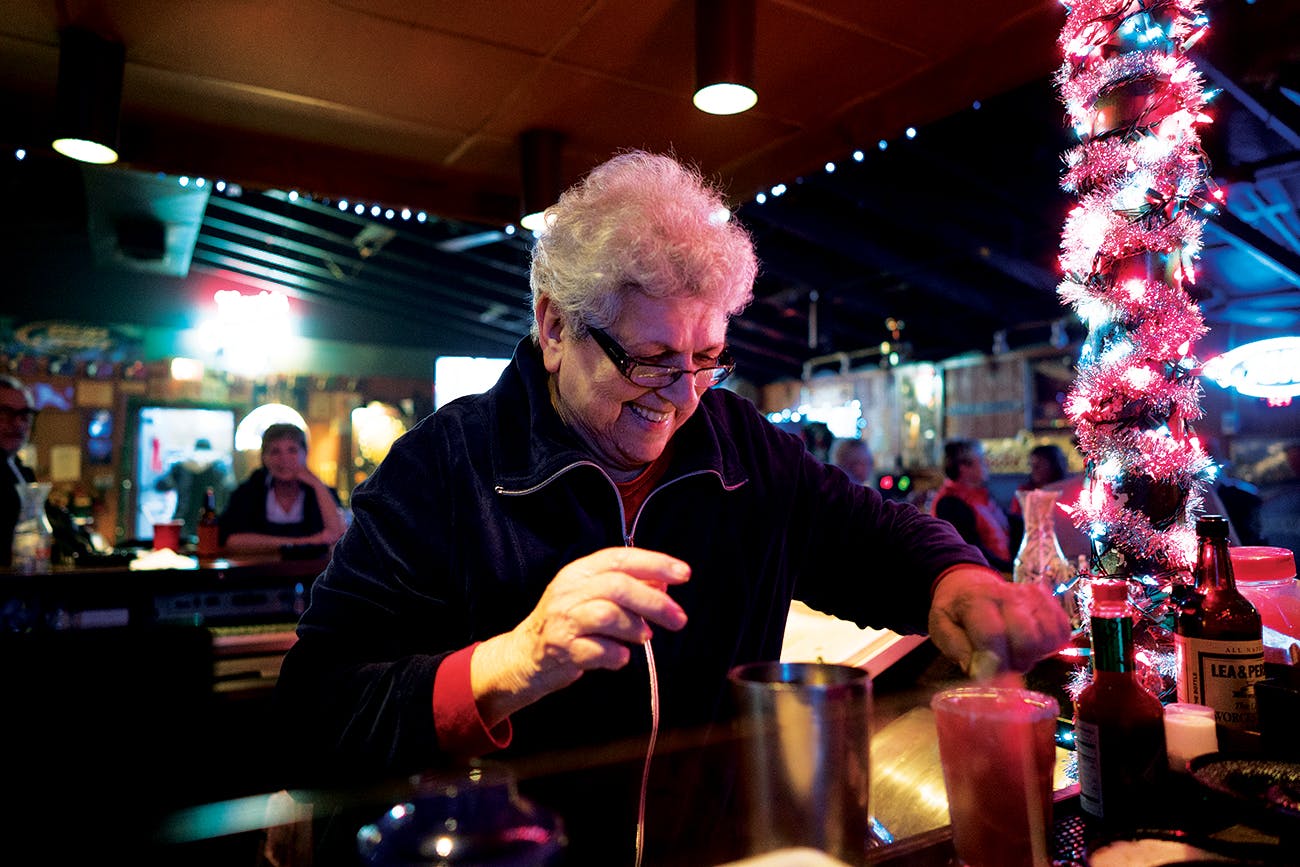
The usual Saturday gathering started even before owner Marie Williams (pictured) took the reins of the Cherokee, a haven of good cheer on Arlington’s otherwise gritty West Division Street. Told she looks much younger than her 77 years, she cackles: “This place keeps me young.” She’s proud that the bar is open every day of the year, including Thanksgiving and Christmas, when she lays out a full holiday dinner for her regulars. “So many of them have nowhere else to go,” she says. “How could I not treat them to the same thing I am eating at home?”

King Arthur’s Pub
2650 N. 11th
Beaumont, TX, 77703
409-892-1552
Sometime back in the seventies somebody took a half-stab at building a “British-looking” pizza place on a curve through the Piney Woods where the city of Beaumont fades toward the Big Thicket. That business failed, and what rose like Excalibur in its place was King Arthur’s Pub, a Southeast Texas bar without parallel. All the dives I’ve been to have their rituals and rites, but none, other than King Arthur’s Pub, have enshrined them into holy writ.

Here, certain visitors are handed laminated cards instructing that they must take a drink at designated times, like whenever Dave bums a smoke, or when Krista says a “Krista-ism,” or when Carli is mean to a customer, or whenever Jimmy says, “Have you read the book?” Bonus: you just might luck into a traveling salesman peddling fresh-off-the-boat raw jumbo shrimp in resealable sandwich bags pulled out of a backpack and advertised in his walkabout patter as a “Trump special—let’s make America great again!”

The Wizzard
2325 Church
Galveston, TX, 77550
409-370-8582
In the mid-nineties, Glynda Oglesby, a native islander, or, as she and most others prefer, BOI (Born on the Island), looked around and saw a downtown Galveston with too few places for grown folks to chill with a drink. So she “bought her retirement” in the form of the Wizzard, the newest incarnation of a notorious bar/brothel/gambling joint formerly known as the Circle News and Cafe that dates to before the Second World War.
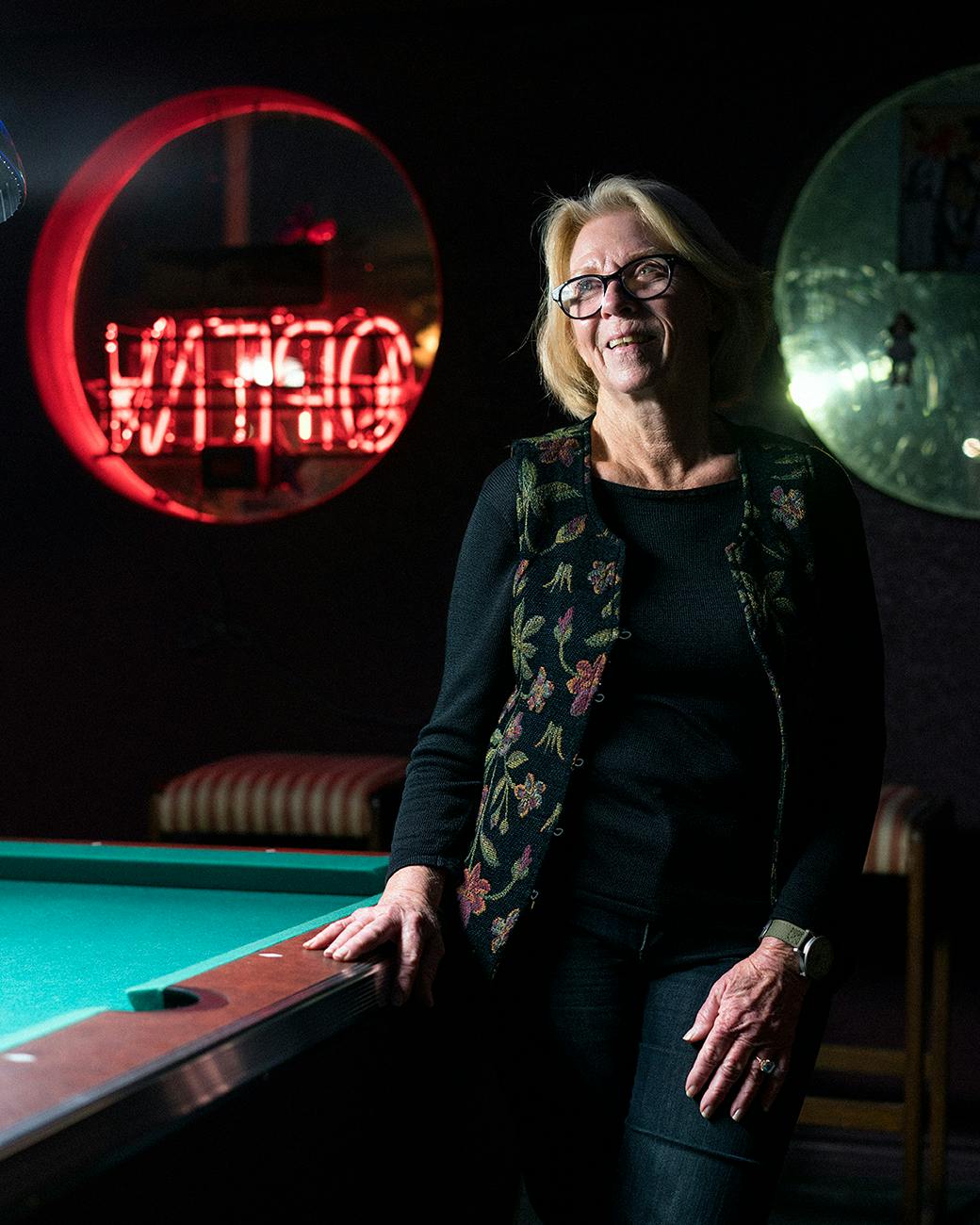
These days you’ll be treated to Oglesby’s deep knowledge of and love for the storm-wracked isle, as well as some jukebox tunes courtesy of late Gulf Coast eccentric George “Bongo Joe” Coleman, a nonpareil percussionist/philosopher who influenced Tom Waits and whose legend continues to smolder so long as people like Oglesby, who knew him personally, nurture the flame he kindled on the Seawall way back when.

D&W Lounge
911 Milby
Houston, TX, 77023
713-226-8777
A few blocks from the Atlantic Coffee Solutions plant (formerly the Maxwell House facility), the D&W still opens at seven in the morning to catch thirsty third-shifters ready to unwind from their caffeinated workday. What elevates the D & W over other beer joints still standing in rapidly gentrifying East End Houston is the loving, whimsical hand of owner Keith Weyel. His bar’s decor includes shrines to the Buddha and Marilyn Monroe. The alfresco smoking porch is decorated with ferns and other potted plants, some blossoming in toilets reimagined as planters. “New Orleans meets Mexico” is how one patron describes the place, and that’s a pretty accurate description of the overall vibe as well as the bands you might see playing on the bar’s makeshift stage.

Lalo’s Sportsman Club
515 E. Lane
Laredo, TX, 78040
956-727-9047
Lalo’s Sportsman Club, which looks for all the world like just another house in a dry and dusty neighborhood, comes by its name naturally. For example, when organizers of the Laredo-based Latin American International Sports Hall of Fame want to fete their inductees, they take them to Lalo’s, where the trim, bespectacled, consummately gentlemanly, and now 81-year-old proprietor Eduardo “Lalo” Cavazos (pictured) is ever-ready with a wizened head full of wisdom, an ice-cold brew, and a jukebox stuffed with cumbia, conjunto, and Tejano tunes.
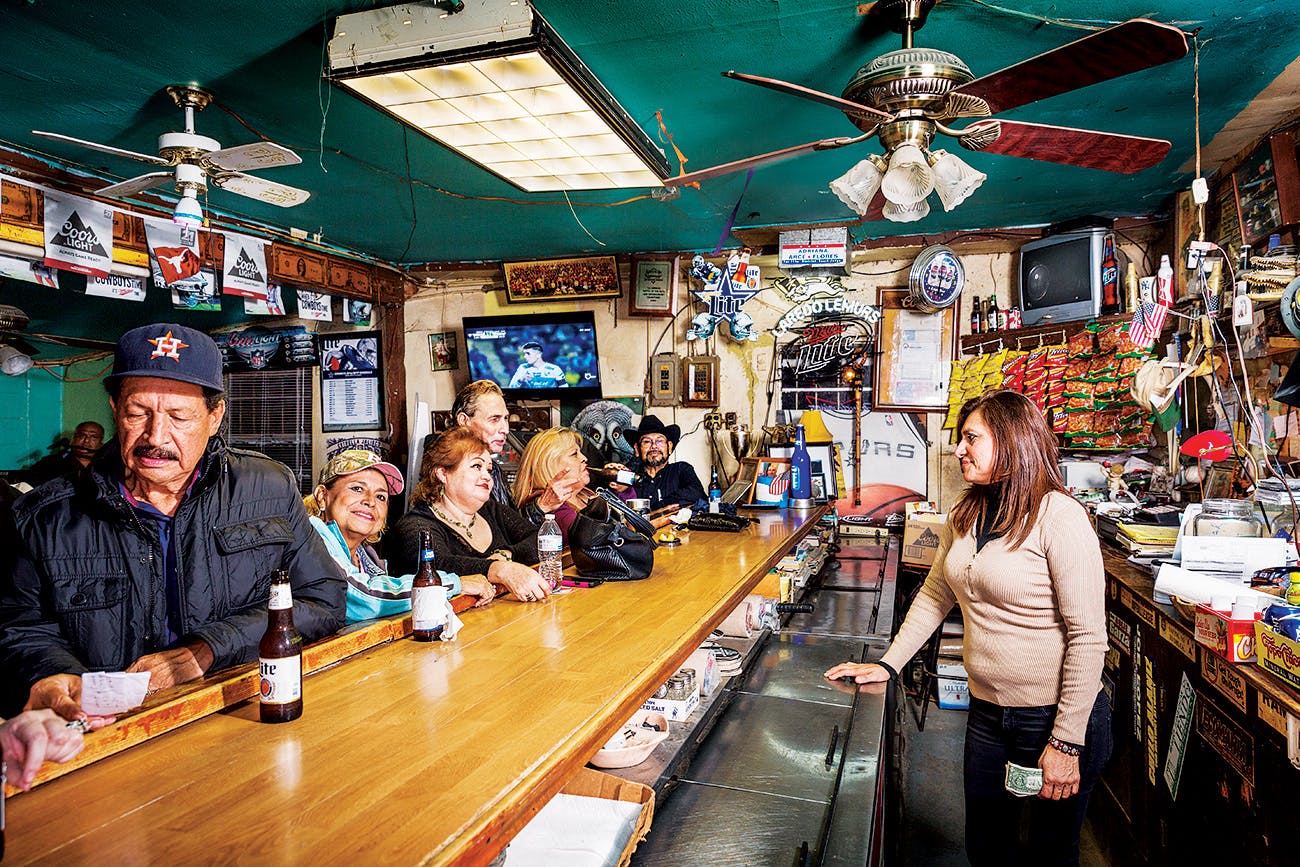
He is proud to note that everyone from Orlando Cepeda to Minnie Miñoso to Joe Kapp to Rubén Amaro to Luis Tiant to Roberto Garza has dropped in. Vintage Catholic icon–like portraits of postwar baseball greats—Joe DiMaggio, Willie Mays, Ted Williams—preside on one wall in this borderland treasure. Cab it here; parking is limited, and many of the customers are walk-ups. But don’t miss it. This place is a hidden jewel.

The Barbarossa Trough
4013 FM 758
New Braunfels, TX, 78130
830-629-7108
Who says you have to head out to Luckenbach for a real old-school German-Texas beer joint? The Barbarossa Trough is exactly the place Waylon and Willie painted in song. The square-fronted, tin-porched shack is way out in the country, at the intersection of a couple of farm-to-market roads in the cotton fields east of New Braunfels. It has a (mostly) vinyl honky-tonk jukebox that should be hallowed as a state treasure. It’s cooled with ceiling fans and heated with a stove.
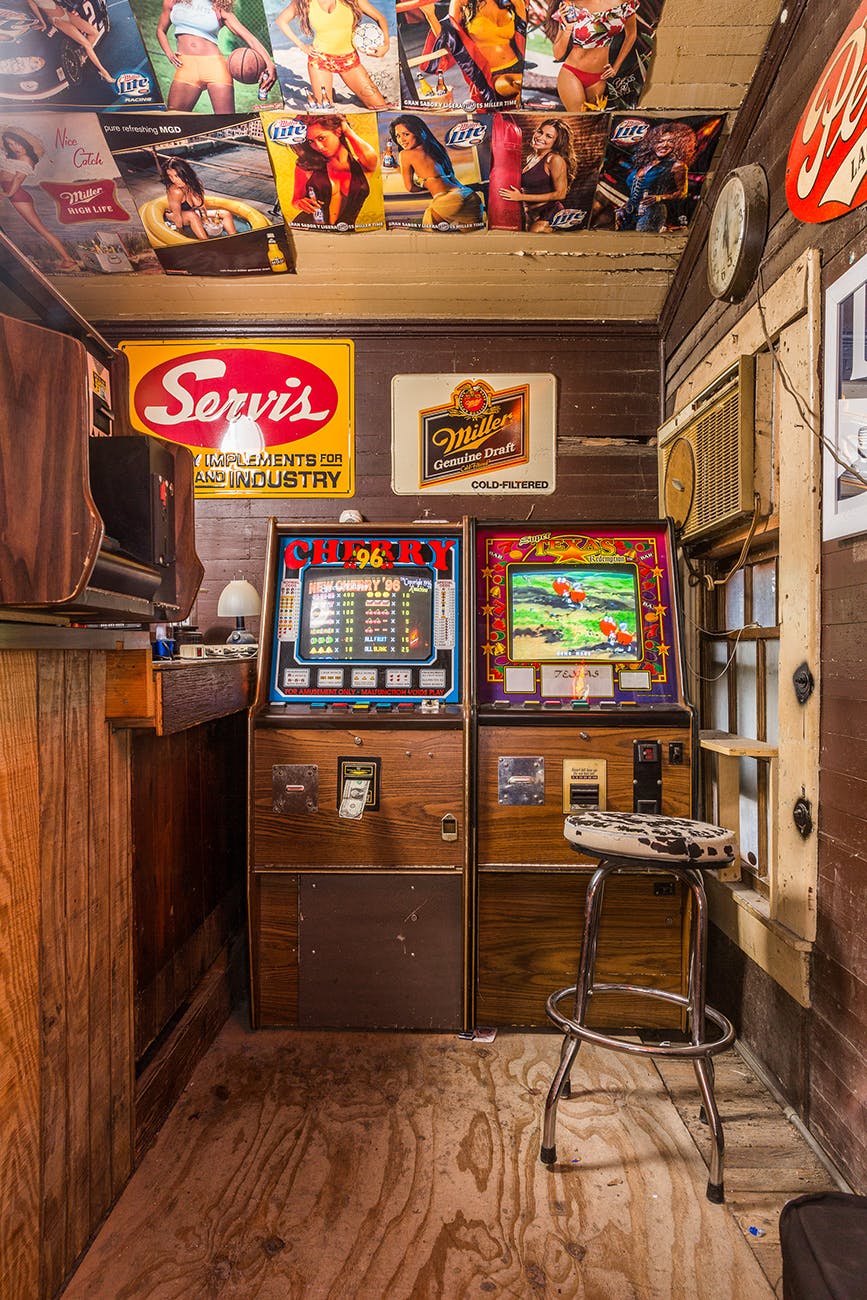
There’s shuffleboard and a shrine of empty cans to long-gone beers of yore, near where an unobtrusive TV set quietly plays—what else?—Gunsmoke, not quite loudly enough to compete with the codgers at the bar decrying the many perceived shortcomings of the outgoing President Obama. And in that same beer shrine corner, there’s a framed newspaper article describing the place’s old-timey bona fides, dated 1988 and now itself yellowing with age. Why this place has yet to become a tourist trap is a puzzler to me—maybe that’s just how real it is. (Cash only, no ATM.)

Betty’s Battalion
1524 E. Grayson
San Antonio, TX, 78208
210-227-9255
Directly across the street from the gates of Fort Sam Houston, Betty’s Battalion has an atypical assortment of regulars. They are younger, mostly Army medical trainees at the base, and they tend to stick around only for the length of their assignments in San Antonio. But while they are there, Battalion owner Betty Ford serves as their surrogate mother, counseling them on their problems, sharing their successes, and slinging the beer and keeping the good times going in her Christmas light–lit, indoor-outdoor fairyland (don’t miss the backyard), albeit one adorned with military memorabilia on every flat surface, vertical and horizontal.

Her crowd comes and goes in platoons, so if you’re lucky, you’ll catch her during a slack time and hear her inspiring life story—31 years of bar ownership, surviving cancer, and raising accomplished kids as a single mom from a tough Alamo City neighborhood—while enjoying her jukebox, which boasts songs by South Texas legends Sunny and the Sunliners and obscure early Robert Cray tunes, like his vastly underrated lament to getting stood up: “I’ve Slipped Her Mind.”

